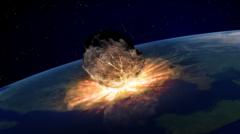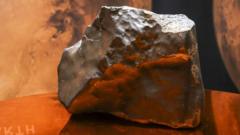The meteorite, measuring 40-60 kilometers in diameter, crashed into the Eastern Barberton Greenstone Belt in South Africa, forming a 500-kilometer-wide crater. This event occurred during Earth's early history when life was limited to simple microorganisms. The impact created rock spherules that were meticulously collected by a team, led by Professor Nadja Drabon from Harvard University, braving wilderness and potential dangers to analyze them for insights into the incident.
As they studied the remnants, the scientists concluded that the catastrophic energy from the impact not only boiled the oceans, causing mass evaporation and killing photosynthetic life forms on land, but also facilitated a nutrient-rich environment for surviving microbes. “Like a giant fertiliser,” Drabon noted, the impact may have played a decisive role in priming conditions for life.
The findings, published in PNAS, contrast with prior notions of solely destructive asteroid impacts, highlighting a complex relationship between cataclysm and resilience in early Earth's biosphere.
As they studied the remnants, the scientists concluded that the catastrophic energy from the impact not only boiled the oceans, causing mass evaporation and killing photosynthetic life forms on land, but also facilitated a nutrient-rich environment for surviving microbes. “Like a giant fertiliser,” Drabon noted, the impact may have played a decisive role in priming conditions for life.
The findings, published in PNAS, contrast with prior notions of solely destructive asteroid impacts, highlighting a complex relationship between cataclysm and resilience in early Earth's biosphere.




















